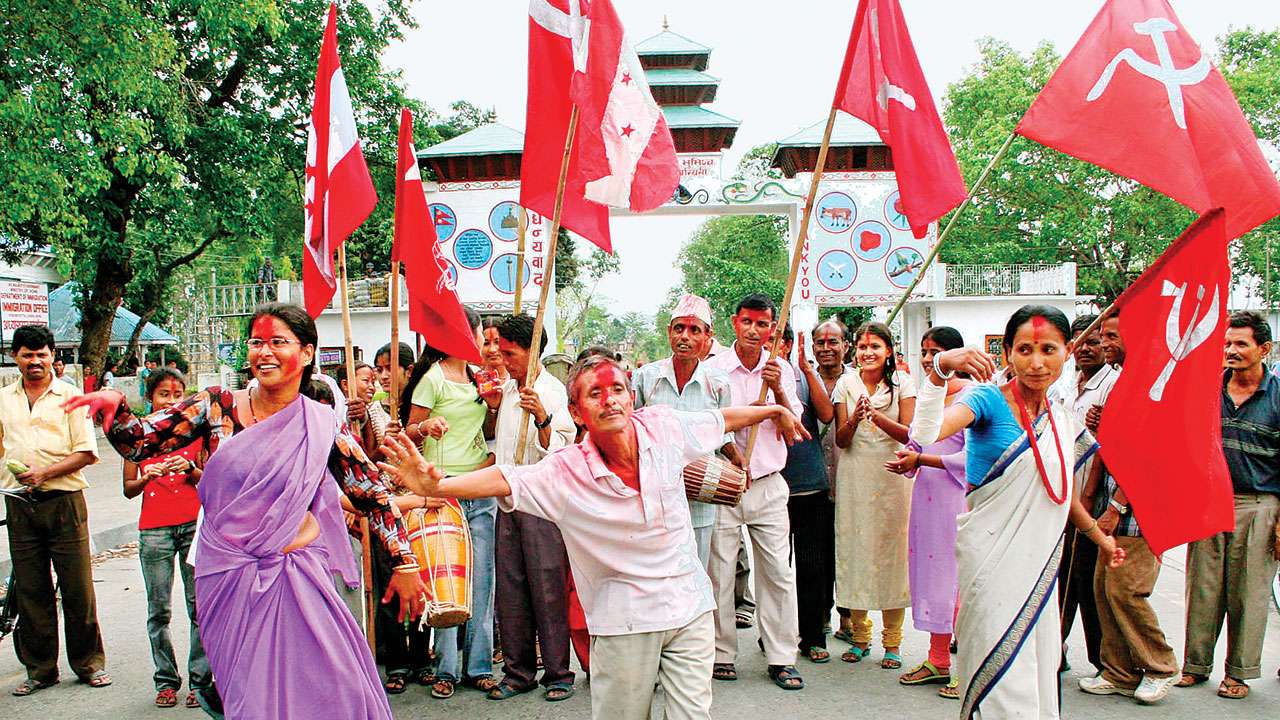
India’s official Communist parties — CPI, CPI(M) and several groups of CPI(M) — are gasping. In the Lok Sabha elections in 2014, the CPI (M) and CPI won nine and one seat respectively; their corresponding poll shares pegged at 3.25 and 0.78 per cent.
Incredible as it may appear, in the first general elections (1951-52), the undivided CPI, together with the Progressive Democratic Front (PDF), had won 23 seats with a vote share of 4.58 per cent.
The Communists contested as PDF candidates in Hyderabad almost immediately after the armed rebellion in Telengana against the autocratic Nizam regime was withdrawn.
The legendary Telangana hero Ravi Narayan Reddy won defeating the Congress candidate, by the highest margin of 2,22,280 votes, an election, when less than 20 MPs got more than 2,00,000 votes. He is the only one to have polled over 3,00,000 votes. Reddy got 70,000 more votes than what Jawaharlal Nehru, elected from Phulpur in UP, polled.
Reddy’s comrade Sunkam Achalu, won from Nalgonda (SC) constituency defeating the Congress candidate by a margin of 1,85,580 votes. None of the 487 remaining elected members in the first Lok Sabha polled even 2,50,000 votes.
The CPI fielded 49 candidates and won 16 of them, coming second in 15 seats. Harindranath Chattopadhyay was elected from the Vijaywada seat as an independent candidate supported the CPI.
The PDF put up 12 candidates, winning seven and emerging second in four. The Communists were the largest group in the lower house of the Parliament.
In terms of quality of performance, Socialist Party (SP) and Krishak Mazdoor Praja Party (KMPP) were substantially behind the CPI and PDF. The SP, led by Jai Prakash Narayan, Ram Manohar Lohia, Achyut Patvardhan and Yusuf Meher Ali, got 10.59 per cent of votes, but won 12 out of 254 candidates.
The KMPP fielded 145 candidates, won nine and received 5.79 per cent of votes. The Bhartiya Jana Sangh, All India Hindi Mahasabha and Ram Rajya Parishad put up 94, 31 and 61 candidates respectively and won three, four and three seats correspondingly, receiving 3.06 per cent, 0.95 per cent and 1.97 per cent of votes respectively.
This data may sadden the rank and file of CPI and CPI (M) in their current state. The Communists continued to remain the largest group in the lower house of Parliament in 1957, 1962, 1967 and 1971, even after the CPI split.
In 1957, 27 CPI members were elected and the party had a vote share of 8.97 per cent. In 1962, it got its highest ever vote share of 9.94 per cent.
In 1967, the first parliamentary poll after the party split, CPI got 23 seats (excluding S M Banerjee, elected as an independent candidate, supported by the party) and 5.11 per cent of votes. The new CPI (M) bagged 19 seats with a poll share of 4.28 per cent.
But beginning that year, the share of Communist votes began to decline. In 1971, CPI won 23 seats (plus Kanpur constituency that elected S M Banerjee with a vote share of 4.37) and CPI (M) got 5.12 per cent of votes and 25 seats.
Thereafter, only once in 1984, did the two Communist parties became the largest opposition group. The CPI(M) bagged 22 seats with a poll share of 5.87 per cent and the CPI won six seats with a share of 2.71 per cent.
The newborn BJP in 1980 won 31 out of contested 433 seats with a vote share of 18.97 per cent, but in 1984 managed to win only two seats out of 224 seats it contested, while receiving 7.74 per cent of votes.
The CPI too had deposit money forfeited in 30 out of 61 seats. In contrast, CPI(M) that fielded 59 candidates had six of them losing their security deposits.
In 2004, when the CPI(M) won 43 seats and became the main support plank for the Congress-led United Progressive Alliance government at the centre, its top leaders like the party general secretary Prakash Karat began dictating to the Congress biggies with a pistol in hand.
These armchair revolutionaries didn’t note that its share of votes was 5.66 per cent plus CPI’s 1. 41 per cent – much less than 9.94 per cent that the undivided CPI secured in 1962. Sadly, Karat refuses to accept official Marxist parties’ growing isolation.
Writer is a political analyst